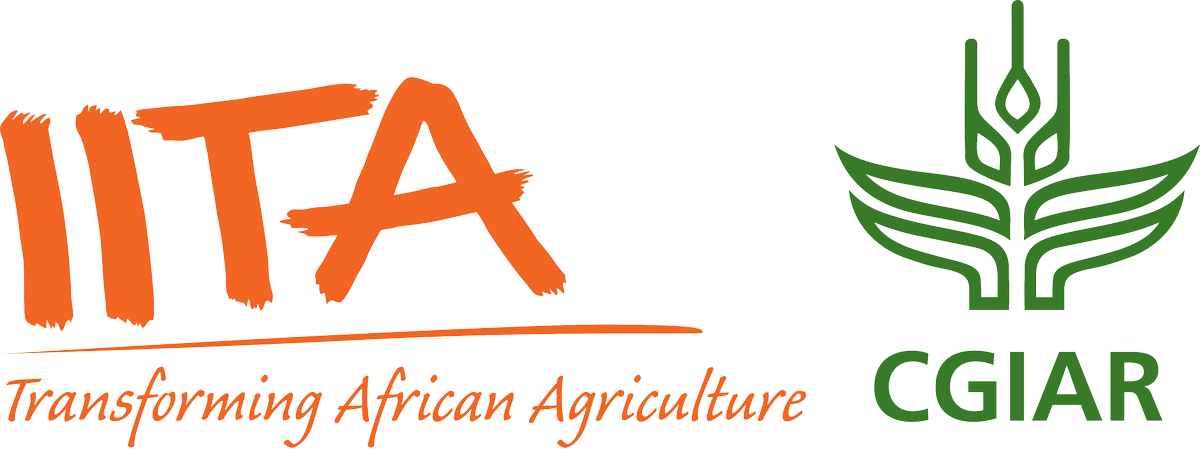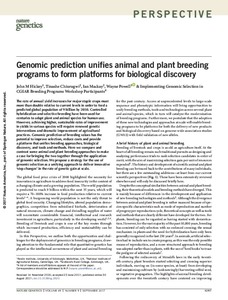| dc.contributor.author | Hickey, J.M. |
| dc.contributor.author | Chiurugwi, T. |
| dc.contributor.author | Mackay, I. |
| dc.contributor.author | Powell, Wayne |
| dc.contributor.author | Eggen, A. |
| dc.contributor.author | Kilian, A. |
| dc.contributor.author | Jones, Christopher S. |
| dc.contributor.author | Canales, C. |
| dc.contributor.author | Grattapaglia, D. |
| dc.contributor.author | Bassi, F. |
| dc.contributor.author | Atlin, G. |
| dc.contributor.author | Gorjanc, G. |
| dc.contributor.author | Dawson, I. |
| dc.contributor.author | Rabbi, Ismail Y |
| dc.contributor.author | Ribaut, J.M. |
| dc.contributor.author | Rutkoski, J. |
| dc.contributor.author | Benzie, John A.H. |
| dc.contributor.author | Lightner, J. |
| dc.contributor.author | Mwacharo, Joram M. |
| dc.contributor.author | Parmentier, J. |
| dc.contributor.author | Robbins, K. |
| dc.contributor.author | Skot, L. |
| dc.contributor.author | Wolfe, M. |
| dc.contributor.author | Rouard, M. |
| dc.contributor.author | Clark, M. |
| dc.contributor.author | Amer, P. |
| dc.contributor.author | Gardiner, Peter R. |
| dc.contributor.author | Hendre, P. |
| dc.contributor.author | Mrode, Raphael A. |
| dc.contributor.author | Sivasankar, Shoba |
| dc.contributor.author | Rasmussen, S. |
| dc.contributor.author | Groh, S. |
| dc.contributor.author | Jackson, V. |
| dc.contributor.author | Thomas, W. |
| dc.contributor.author | Beyene, Y. |
| dc.date.accessioned | 2019-12-04T11:10:16Z |
| dc.date.available | 2019-12-04T11:10:16Z |
| dc.date.issued | 2017 |
| dc.identifier.citation | Hickey, J.M., Chiurugwi, T., Mackay, I., Powell, W.,
Eggen, A., Kilian, A. & Rabbi, I. (2017). Genomic prediction unifies animal and plant breeding programs to form platforms for biological discovery. Nature Genetics, 49(9), 1297-1303. |
| dc.identifier.issn | 1061-4036 |
| dc.identifier.uri | https://hdl.handle.net/20.500.12478/2055 |
| dc.description.abstract | The rate of annual yield increases for major staple crops must more than double relative to current levels in order to feed a predicted global population of 9 billion by 2050. Controlled hybridization and selective breeding have been used for centuries to adapt plant and animal species for human use. However, achieving higher, sustainable rates of improvement in yields in various species will require renewed genetic interventions and dramatic improvement of agricultural practices. Genomic prediction of breeding values has the potential to improve selection, reduce costs and provide a platform that unifies breeding approaches, biological discovery, and tools and methods. Here we compare and contrast some animal and plant breeding approaches to make
a case for bringing the two together through the application of genomic selection. We propose a strategy for the use of genomic selection as a unifying approach to deliver innovative ‘step changes’ in the rate of genetic gain at scale. |
| dc.description.sponsorship | Biotechnology and Biological Sciences Research Council, United Kingdom |
| dc.format.extent | 1297-1303 |
| dc.language.iso | en |
| dc.subject | Food Prices |
| dc.subject | Climate Change |
| dc.subject | Food Security |
| dc.subject | Animal Breeding |
| dc.subject | Plant Breeding |
| dc.subject | Biodiversity |
| dc.subject | Genomic Prediction |
| dc.title | Genomic prediction unifies animal and plant breeding programs to form platforms for biological discovery |
| dc.type | Journal Article |
| dc.description.version | Peer Review |
| cg.contributor.crp | Livestock |
| cg.contributor.crp | Roots, Tubers and Bananas |
| cg.contributor.affiliation | University of Edinburgh |
| cg.contributor.affiliation | National Institute of Agricultural Botany, UK |
| cg.contributor.affiliation | Scotland's Rural College |
| cg.contributor.affiliation | Agrigenomics |
| cg.contributor.affiliation | University of Canberra |
| cg.contributor.affiliation | International Livestock Research Institute |
| cg.contributor.affiliation | University of Cambridge |
| cg.contributor.affiliation | Empresa Brasileira de Pesquisa Agropecuaria |
| cg.contributor.affiliation | International Center for Agricultural Research in the Dry Areas |
| cg.contributor.affiliation | Bill & Melinda Gates Foundation |
| cg.contributor.affiliation | World Agroforestry Centre |
| cg.contributor.affiliation | International Institute of Tropical Agriculture |
| cg.contributor.affiliation | International Maize and Wheat Improvement Center |
| cg.contributor.affiliation | WorldFish |
| cg.contributor.affiliation | Cornell University |
| cg.contributor.affiliation | Aberystwyth University |
| cg.contributor.affiliation | Bioversity International |
| cg.contributor.affiliation | Norwich Research Park |
| cg.contributor.affiliation | Consortium of International Agricultural Research Centers |
| cg.contributor.affiliation | Biotechnology and Biological Sciences Research Council |
| cg.contributor.affiliation | James Hutton Institute |
| cg.researchtheme | BIOTECH & PLANT BREEDING |
| cg.isijournal | ISI Journal |
| cg.authorship.types | CGIAR and developing country institute |
| cg.iitasubject | Biodiversity |
| cg.iitasubject | Genetic Improvement |
| cg.iitasubject | Plant Breeding |
| cg.iitasubject | Plant Genetic Resources |
| cg.journal | Nature Genetics |
| cg.howpublished | Formally Published |
| cg.accessibilitystatus | Limited Access |
| local.dspaceid | 86060 |
| cg.targetaudience | Scientists |
| cg.identifier.doi | http://dx.doi.org/10.1038/ng.3920 |

